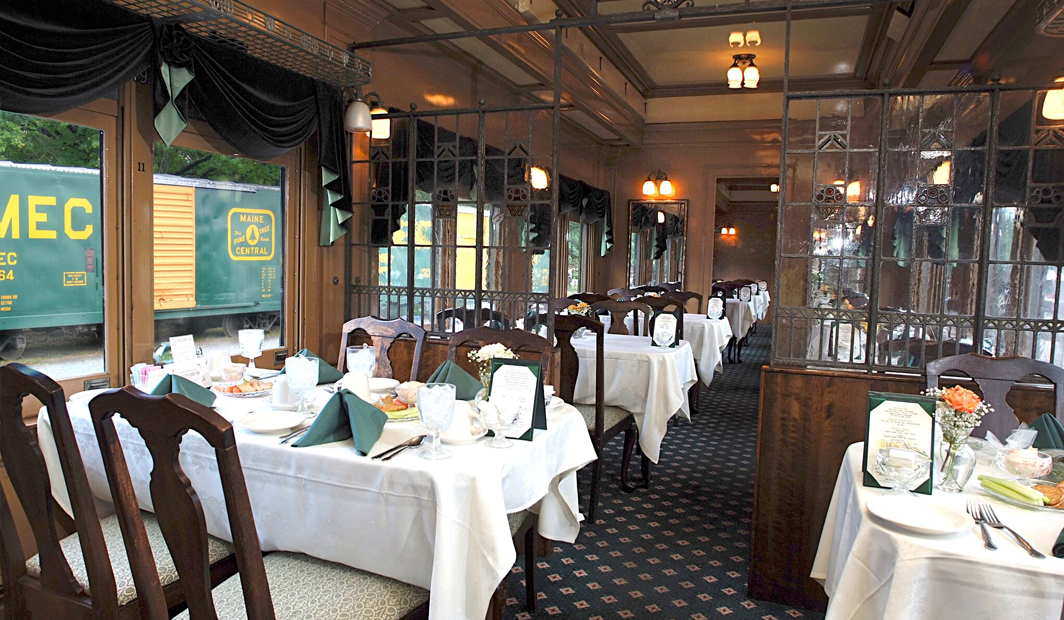
Pullman configuration Plan 3916
This story begins in 1927, when Pullman built a series of parlor cars to plan 3916A. This plan was essentially 36 revolving parlor car seats with a restroom in each end of the car. These cars were originally assigned to New Haven trains with parlor cars being operated under contract by the Pullman Company. The two cars which would eventually migrate to the Kansas City Southern were the Taunton (initial service date of August 15, 1927) and the Wallingford (initial service date of August 9, 1927.)


On the Wabash, these cars operated in Chicago-St. Louis service on the Banner Blue and Blue Bird. Wabash purchased these cars from Pullman on December 31, 1945, as part of the Pullman divestiture resulting from antitrust action. In the post World War II era, both the Banner Blue and Blue Bird carried a Pullman drawing room observation parlor car and a Pullman parlor-lounge car with radio. It is believed that Rambler and Wayfarer were two of the parlor-lounge cars thus assigned. As more streamlined cars were delivered, both the Banner Blue and the Blue Bird were re-equipped, and the heavyweight parlor cars became surplus. Rambler and Wayfarer were both withdrawn from Pullman lease on April 25, 1952.
The two parlor-lounge cars were purchased by the KCS in 1953, becoming cars 500-501. It is uncertain whether the KCS retained the Wabash names, but based on the railroad's precedent with similar cars purchased earlier, it is presumed that the cars carried only numbers, no name. If these cars had a regular assignment in 1953-1954, it is not evident from a review of public timetables or the Official Guide of the Railways.
During the early 1950s, KCS trains 15-16, the Flying Crow, was a coach only train with a heavy load of mail and express. The train was upgraded beginning May 1, 1955 when Pullman line 3176 was restored between Kansas City and Shreveport using heavyweight 10 section-3 double bedroom cars. Food service was restored in July 1955 when vending machines were added to cars 500-501. The Pullman service on this train ended after only 14 months, last trip on July 11, 1956, but the vending machine food service lasted until January 10, 1958 when one of the three Shreveport-Kansas City schedules was discontinued.

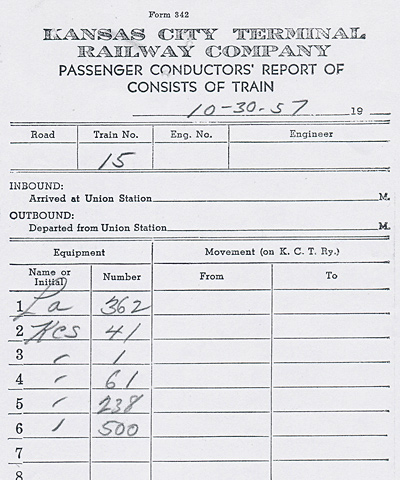
Kansas City Terminal form for departing KCS train 15 on October 30, 1957, showing assignment of car 500.
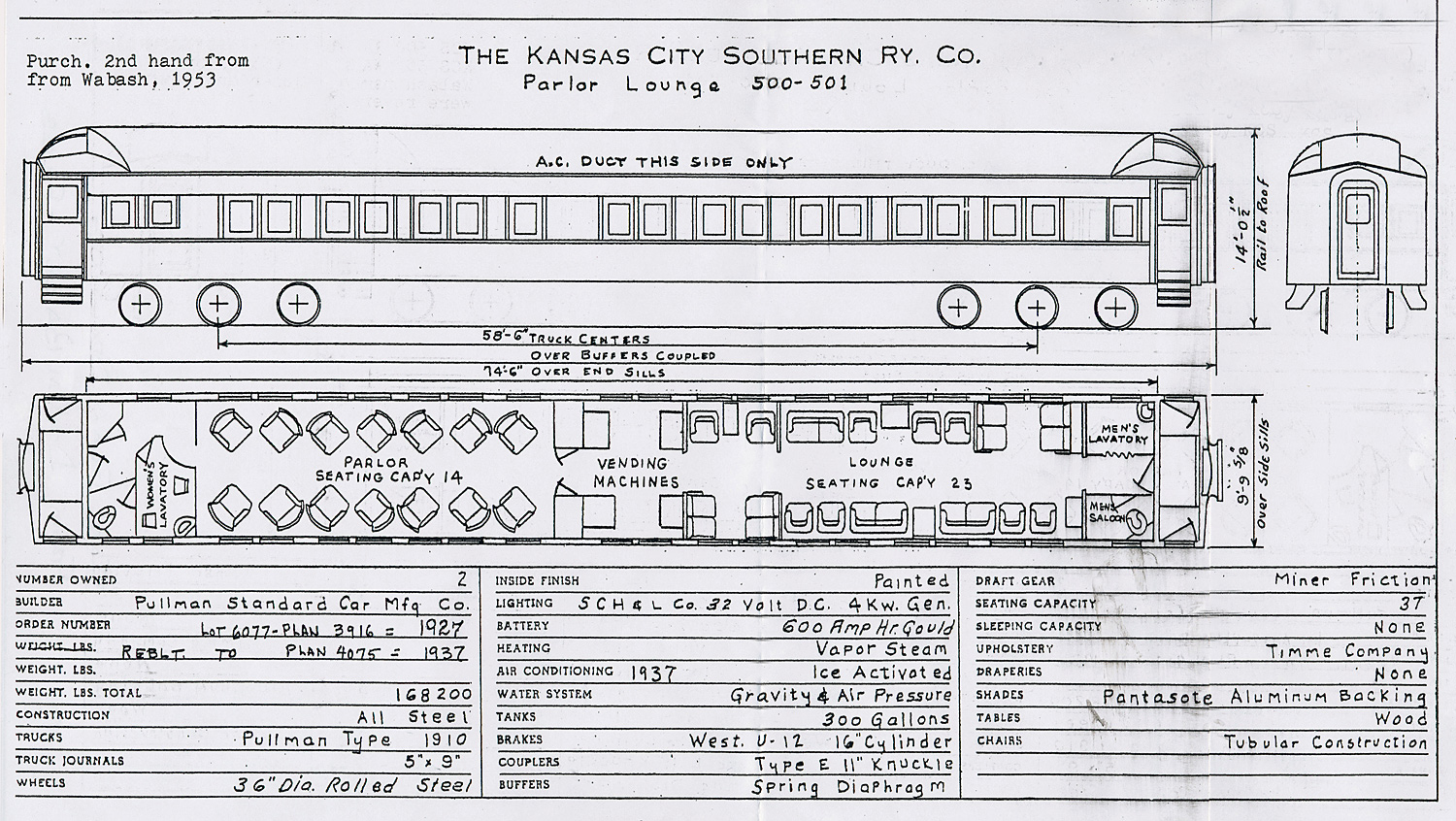
In 1962, T.W.M. Long began hauling passengers on the Reader Railroad, capitalizing on the fact that the railroad was the last common carrier, exclusively steam powered mixed train remaining in the United States. The first passenger car purchased was one of the KCS parlor-lounge cars, KCS #500, which was delivered to the Reader on Sunday June 14, 1962 (per a letter from Mr. Long to Clifton Hull.) On the KCS the car was unnamed, carrying only the number 500. However, Tom Long, a longtime railfan and rail historian, also restored what was believed to be the car's original Wabash name of Rambler. The Rambler 500 was utilized on the first run of the Reader Railroad mixed train on Wednesday December 19, 1962. The Reader removed the KCS vending machine modification in the center section of the car and added seating to increase the car's capacity to 45 passengers. A Milwaukee Road mixed train caboose was soon purchased, followed by two Rock Island commuter coaches, but the 500 remained an integral part of the Reader passenger train until the end of operations in May 1973.
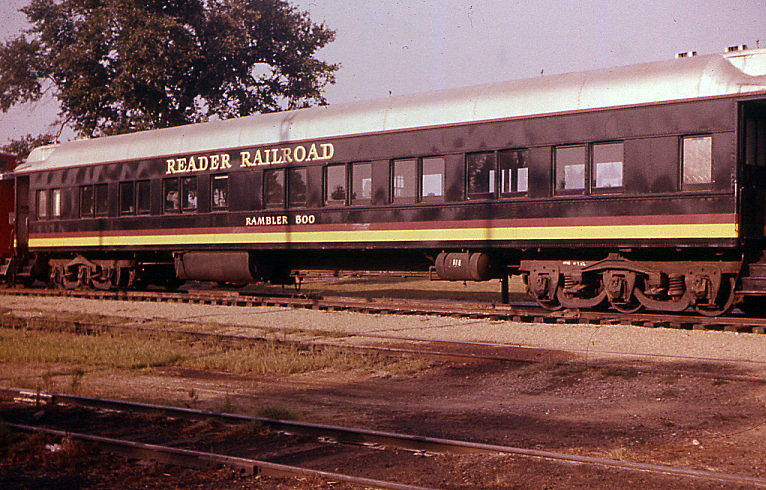
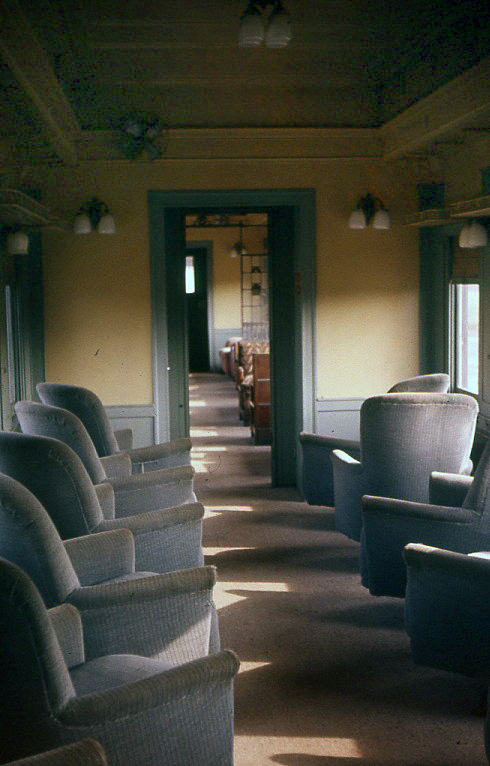
Parlor end (above) and lounge end (below) of Rambler 500.

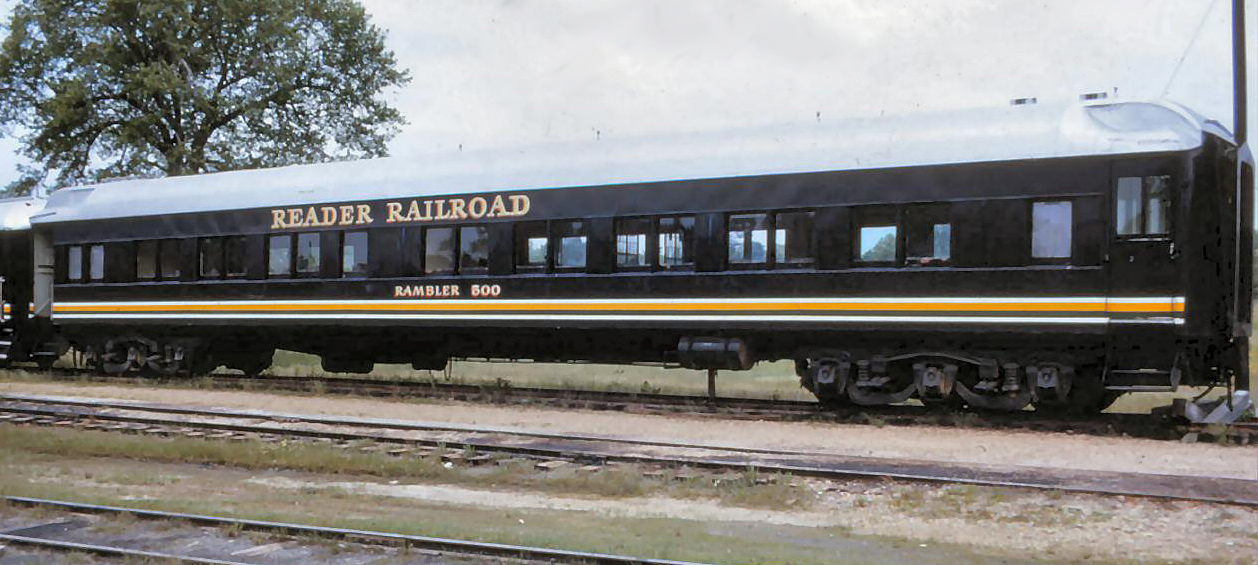
Rambler after repainting in colors later adopted by the Reader Railroad.
The parlor car remained at Reader for a number of years following the Reader's abandonment, but in 1978-79 was eventually sold to the Valley Railroad at Essex, CT. The museum planned to restore the car to its original name, which was presumed to be Taunton, but in the course of removing old paint, the original car name Wallingford was revealed. As a result of this discovery, it is presumed that the Wabash Wayfarer actually became KCS 500 and the Wabash Rambler was actually KCS 501.
The car was subsequently restored as the Wallingford, and provided first class accommodations on the museum's steam train until 1991. It was subsequently remodeled, with most of the interior converted to dining car seating for the museum's dinner train. The dining car interior is very well done, but its unfortunate that the original parlor-lounge configuration was lost.

